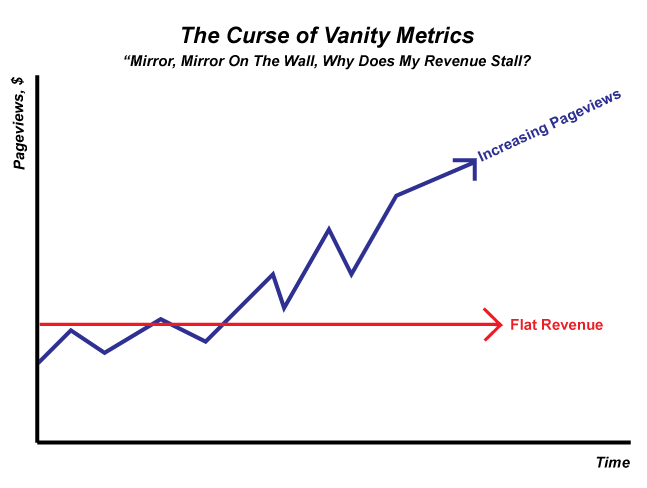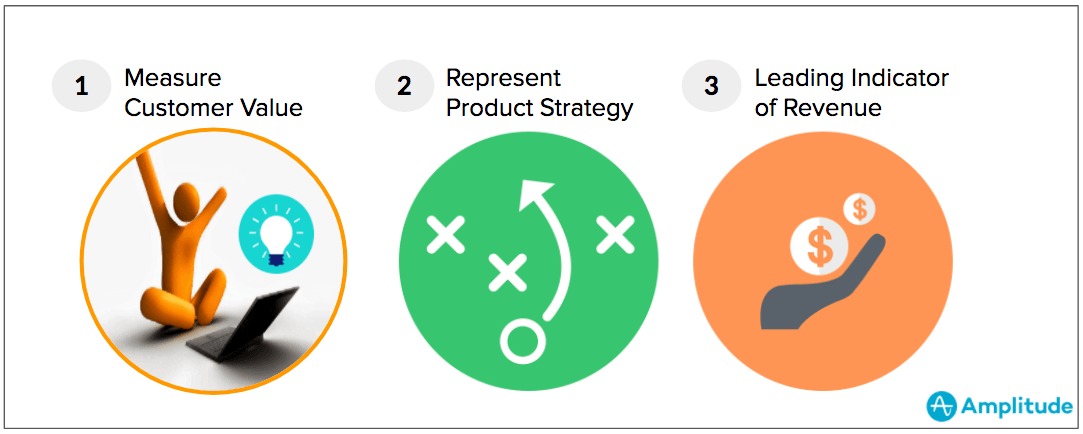Tech startup vanity metrics - things that sound good vs. things that matter
Dec 19, 2019
Freelancers, startups, growing companies, and even well-known brands sometimes happen to find themselves stuck with the wrong goals and lost in investigating the wrong data. Being behind the wheel of a buzzing tech startup, it is oddly satisfying to brag with your increasing popularity and the impressive numbers behind it. Sadly, the only potential use of those numbers is boosting your ego for a while, before you learn to recognize their hollowness.
Vanity metrics look, sound, and feel great, but are a dangerous thing to count on when you pursue stable company growth. Tech startup vanity metrics do not provide any kind of valuable marketing insight; they can even trick you into believing you’re on the right track, while you are really not. They can be misleading, subjective, and incapable of providing relevant information for your team to rely on.
So, how do you quit the vanity fair? Which metrics matter, which do not, and how to define what’s truly important for your tech startup? Let us make this long story really short for you.
Leaving the vanity fair: numbers you should stop measuring
It’s always wiser to educate yourself and re-define your priorities in theory, before the harsh reality comes crashing down on you and teaches you the hard way. Thankfully, many had gone down this vicious path before and are eager to share plenty of valuable practical advice.
So according to experience, some of the most commonly misused and/or misinterpreted tech startup vanity metrics include:
Number of subscribers
The number of active users and subscribers currently paying for your product might seem like a logical growth metric, especially if you lack experience. Anyway, time and practice show a different pattern – the number of new and trial users is important, but what’s even more important is their behavior. Are they actively using your product? Are they engaging with it on a daily basis? If they don’t – why is that and how can you fix it? Keeping an eye on these processes can reduce your churn rates and give you a better understanding of your enterprise.
Spikes in website traffic
An aggressive social media or search engine marketing campaign, along with organic SEO, can deliver some excellent results for your website traffic. Maybe you wouldn’t be startled to find out that those spikes in traffic don’t always come back as a boost of revenue. The curve of the graphics means nothing until it brings along sales and concrete financial results for your tech startup.
Social media fans/followers
Let’s face it – tech startup companies are rarely Instagram influencers, and therefore they shouldn’t worry that much about social media fans and followers. Of course, gaining popularity is a definite prerequisite of success, yet it’s just one of the many. Purchasing random likes or having a massive social media reach still doesn’t do the magic, because not every follower is a potential client. Social media shares and conversion rates, on the other hand, are far more meaningful metrics to follow, because they mean actual engagement with your content.
Number of new leads
Website leads are quite important, but not in a matter of quantity, but rather in quality. Generating a tremendous amount of worthless leads in your funnel is not very wise – it will drain your marketing and advertising budget, without ever converting it into noticeable financial accumulations. That’s where your advertising team needs to step in and produce a rational strategy: how to provide a sufficient number of quality leads instead of just bringing an indifferent mass of people to your website.
Number of raw pageviews
The king of tech startup vanity metrics is called “pageviews.” The good news is: yes, you have probably generated good-quality content in our blog that gives value to the reader. The bad news is: you can’t be sure of that until you dig deeper.

All your plenty of pageviews are still in vain if:
- You are facing high bounce rates;
- Your blog posts fail to gain a sufficient number of social shares;
- Your copywriter didn’t incorporate an adequate internal link building and a reasonable call to action;
- Readers stay on your blog without ever being interested in your product/service.
Thankfully, all of the above are also measurable, and it might be a great idea to concentrate on them instead of falling in love with the number of raw and questionably meaningful pageviews.
Total amount spent on advertising
There is a particular type of mindset that still practices boasting about the budget instead of the outcomes it delivers. The truth is, mates, size doesn’t matter. A large amount of money spent on advertising doesn’t guarantee either conversions or any success at all. Actually, some of the most amazing growth hacking case studies begin with little to no financial investment, combined with boldness and imagination. So, instead of spilling resources into the nothingness and being proud of it, you better start measuring your ROI and optimizing your ad effectiveness.
Rethinking your priorities: define the metrics that actually mean something for your business
In order to benefit from the steady, long-term achievements of your tech startup, you should leave vanity behind and focus on proper metrics that provide some understandable insight. Making a list of those metrics is not that simple, neither universal. Every startup is bound to determine its own set of growth metrics that adequately outline its aims and objectives as a product or service provider. So how do you go about doing that?
One of the most potent metric tactics is the so-called “North star metric” approach. In a nutshell, it means defining one specific metric, based on the character of your startup and the essential value that your product provides customers with. You probably specified that value back when you came up with your tech startup business plan, but if not – that’s an excellent time to do it.
The North Star Metric (NSM) embraces the primary business objective and offers the most simplistic way to measure growth and prosperity. For example, Facebook’s NSM is “daily active users,” while Airbnb’s NSM is “nights booked.” According to the Amplitude, a useful North Star Metric has three main features: it captures the moment when the customer finds value; it represents your current product strategy and is the main driver of revenue.

Another set of relevant tech startup metrics that you might need to comprehend include retention and churn rates, return on advertising spending, customer acquisition cost, and tons of others, that you need to understand if you want to be an effective leader at the help of your company.

Visualizing your progress: the startup metrics dashboard
Defining the metrics to guide your tech startup through is necessary, but automated analysis and monitoring of this data are equally essential. Most startups can greatly benefit from extra transparency and clarity of vision about internal processes – this helps in synchronizing teams, staying aware of the current direction of the company, and concentrating on the pressing needs of the company.
A tailor-made internal system in the form of a startup metrics dashboard will undoubtedly pay off since it will manage and visualize important data, improve business management, and synchronize teams’ efforts towards a general business intention. The startup metrics dashboard can materialize in the form of a screen or a multimedia screening device, visible for every team member, and available all-time in the company’s offices. This is a simple hack that significantly boosts team productivity and keeps the focus on primary objectives, instead of wasting time and resources in ineffective attempts to communicate the company’s issues.

At the end of the day
At the end of the day… Nobody cares about social media popularity, the massive website traffic, or the impressive list of newsletter subscribers if they fail to bring along actual profits and stable business growth. Perceptive business entrepreneurs learn how to observe processes beyond vanity metrics and dare to explore further; to define their own measures of success and follow them wisely; to develop, shape up and grow in accordance with their own identity.

